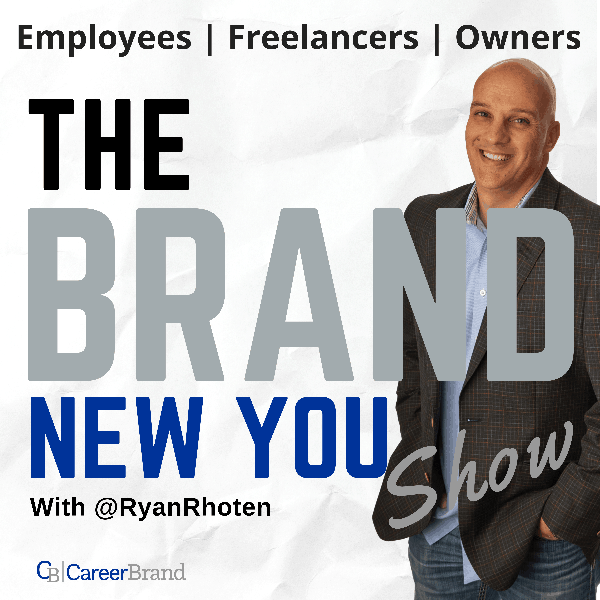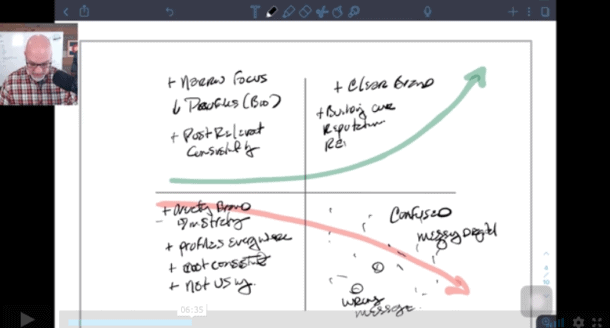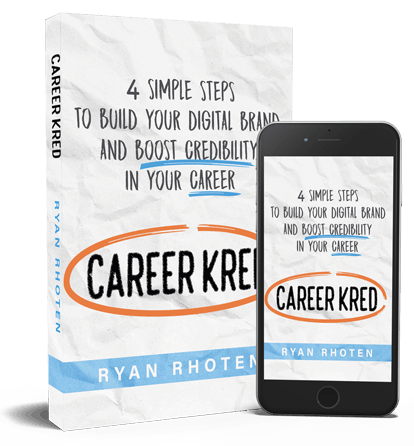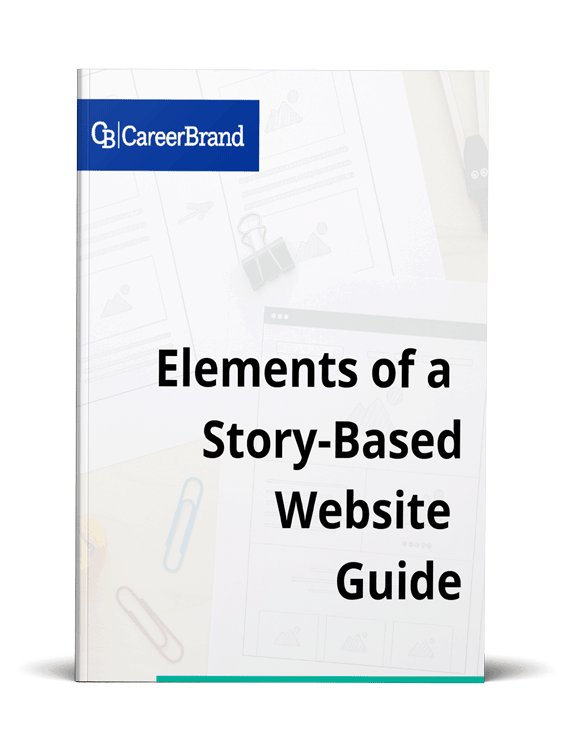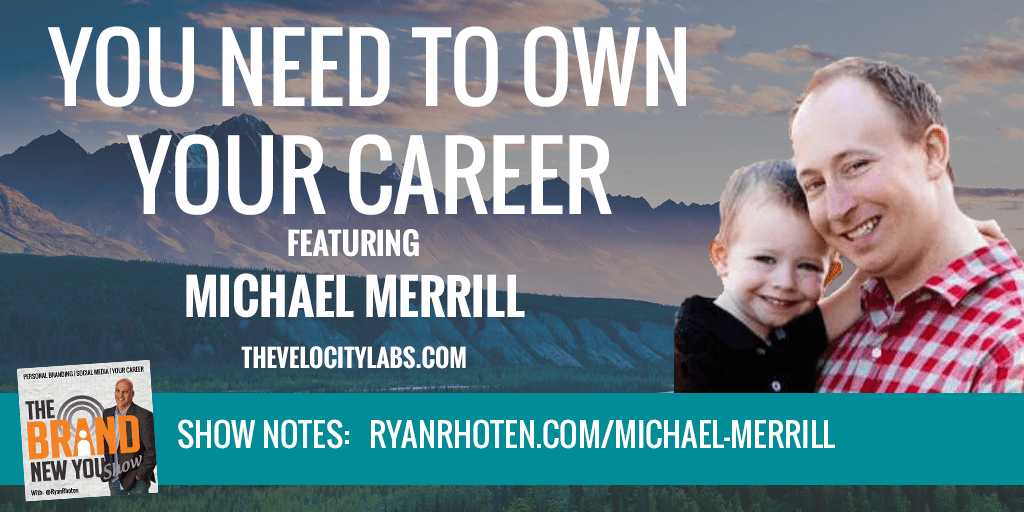
Michael Merrill is the founder and achievement architect of The Velocity Labs.
At The Velocity Labs, Michael teaches others to apply the same strategies and techniques that allowed him to become one the youngest executives at the Walt Disney Company by age 30 while at the same time increasing his earnings by over 500%.
Michael strongly believes that we, you and I, are the drivers of our careers and our life.
So, If you are in a place where you have been passed up year after year for a promotion or you feel stuck with a perceived lack of growth opportunities, then without a doubt, today’s show is for you.
[smart_track_player url=”http://traffic.libsyn.com/thebrandnewyoushow/Michael_Merrill_DRAFT3.mp3″ title=”Michael Merrill – The Velocity Labs” artist=”Ryan Rhoten” color=”#f5811f” download=”false” social=”true” social_twitter=”true” social_facebook=”true” social_gplus=”true” social_linkedin=”true” social_stumble=”true” social_pinterest=”true” social_email=”true” ]
MICHAEL MERRILL’S CAREER JOURNEY
Michael started his career exactly as you would expect from someone who graduated with a film degree, working at Macy’s selling shoes. I jest of course, but ironically, it was his stint as a shoe salesman that lead to his Cinderella moment. See what I did there.
Michael had been trying to get a full-time job in “the industry” and was working part-time at Macy’s when one day his Cinderella came in looking for shoes. Michael helped her find the perfect shoe then walked her to the register.
That’s when she paid with her Walt Disney Credit Union card.
Michael asked her what she did for Walt Disney and long story short, before she left the store she asked Michael to send her his resume. That conversation leads to a temporary position at Disney for Michael.
From there, Michael worked his way up the Disney corporate ladder to eventually become one of the youngest executives in Disney history.
Your Ultimate Guide to Get Promoted, Make More Money and Get The Respect You Deserve
Michael’s book is one I wish I would read ten earlier in my career, which of course would have been impossible because he hadn’t written it yet, but you get the point.
The book is filled with wisdom that Michael has gained throughout his journey up the Disney corporate ladder. it offers actionable advice to business professionals just getting started and for those who are in the prime of their career.
Michael wrote the book for business professionals who are frustrated with their career advancement and for those who are looking for advice to move more quickly up the corporate ladder.
In the podcast, we cover each chapter in detail and of course started with chapter one.
Chapter 1 – The Power of Knowing Where You’re Going
Echoing the statements of both Scott Barlow and Olivia Gamber, Michael starts his book off by defining the importance of knowing where you want to go with your career.
In his experience, most people know they want to get promoted and make more money, however, they don’t really know where they want to end up longer term. As a result, there is a tendency to repeat behaviors that got them to their current place.
As the saying goes, if you keep doing what you’ve been doing you’ll keep getting what you’ve been getting.
So if you really want to change your position in life, your role with your company, you have to recognize that your behavior must change to match your desired position.
It’s very much like what the Cheshire cat said in Alice in Wonderland,
“If you don’t know where you are going, any road will get you there.”
The same is true with your career. Without knowing your direction, how do you know which skills to acquire or knowledge to gain? Short answer, you don’t. This is why you feel like you’re floundering in your career.
Michael also says the same is true for your resume. They need to be tailored to the specific position you want to obtain, which of course implies, you need to know where you are going.
Michael and I spend some time discussing how you can obtain the skills and knowledge required to start moving in your desired direction including different assessments you can take to gain additional clarification.
Chapter 2 – Master The Invisible Forces That Are Holding You Back
Chapter two of Michael Merrill’s book is largely about having the right mindset as you approach your work. Michael tells us our attitudes and belief system make all the difference.
Our attitudes impact everything, including how we respond to feedback, positive or negative. We when we receive feedback we have two choices. We can ignore it or we can use it to learn what is important to our boss then apply it so show we listened.
Our belief system also plays a role in our fears which can impact our career. For example, you may be concerned or afraid to have a career discussion with your boss. As a result, you choose not to have the conversation.
Without holding this conversation you can’t learn about the things you need to know to advance in your career. Instead, you seek to avoid the perceived pain versus pushing it aside and having the conversation.
Michael describes a method called the pain and pleasure strategy that we can use to help us overcome these negative feelings towards certain aspects of our career. Basically, this strategy causes you to replace your fear of something or the pain you associate with a particular act, with the opposite emotion.
Rather than only look at the pain, ask yourself instead how will this situation help you, or bring you pleasure. This is probably easier to say then do in practice but Michael assures us that it works and is worth the effort.
To emphasize this, Michael offers a great example about asking for a raise and what they could mean to you over the rest of your career.
Michael has a great quote during our chat that bears repeating and plays right into why you need to be willing to replace pain with pleasure and have some of those difficult conversations.
[Tweet ““People who have been in a role for 3 to 4 years, generally, are not going to advance further past that” – @.”]
Does this describe you? If so maybe it’s time to finally have that career discussion. So rather than ask what if I do, instead ask what could happen if I don’t. It could be worth a million dollars to you.
Chapter 3 – Get Influential People In Your Corner
Michael tells us that when it comes to our career, surrounding ourselves with the right people can make all of the difference. They can help you, motivate you, and even fight for you in certain circumstances.
Michael challenges all of us to look around our organization and ask ourselves, who are the five people in this organization I aspire to be like and how do I spend as much time with them as possible.
Think about the power of those questions.
Can the people you surround yourself with today help you advance to where you want to be in your career? If your answer is no, you really need to think about who can.
Remember, if you keep doing what you’ve been doing you’ll keep getting what you’ve been getting. Said another way, you get what you focus on.
Michael and I also talk about the differences between a mentor and a sponsor. Michael defines a mentor as someone who is more of an advisor. Their role is to offer you advice whereas a sponsor is someone who acts on your behalf.
A sponsor is the one who talks about you and your greatness to others, they advocate for you when you’re not in the room. A sponsor is actively working to help you succeed. A mentor wants you to succeed as well but takes a much less active role.
Chapter 4 – Getting Alignment Through the Pesky Career Conversation
Michael and I start off chapter four by discussing his definition of common sense, which is no common. Michael would like to see the whole notion of common sense, torn down and rebuilt.
Why? Because what’s common to you may not be common to others. Our definition of common sense is developed over time. It goes all the way back to chapter one when we discussed our attitudes.
How you are raised and the experiences you have throughout your career, all contribute to your view of what is common and what is not. For someone to have the same viewpoint on common sense as you, they would have had to experience the exact same things as you along the way.
Starting to see the genius behind not so common sense?
This is why you can’t assume your boss knows what you want to do with your career. You might think it’s common sense that you would want his or her role for example.
But how does your boss actually know this is what you are thinking if you haven’t told them? You can’t assume that what is a common move for you in your career is what your boss was thinking as well. My career has been anything but common.
Chapter 5 Being So Valuable They Can’t Say No
Chapter five is all about how you can be as valuable as possible for your company. This, of course, means that you understand how you add value to begin with. To answer this Michael brings us back to the career conversation with our boss.
Understanding his or her concerns, goals and objectives and how you can contribute to their success is key to increasing your value within a company. Michael reminds us to remember that business exist to generate profits.
Understanding where the company’s profits come from is your starting point for becoming so valuable they can’t say no.
Fixing or putting in place processes, saving the company money, helping to secure a sale are all ways you can contribute in a valuable way to the company’s bottom line. Do these activities often enough and you will be noticed.
Michael suggests another way to assess how you add value is to view yourself as a consultant. Mark Anthony Dyson took a similar position during our discussion. As a consultant, you are constantly looking at how you can help the company in the hope you get hired back.
Viewing yourself as a consultant or as a business of one whose services are being hired out is a great way to help you identify how you add value in any given situation.
Chapter 6 Making Sure They See How Extraordinary You Are
We all believe we do great work. The problem however in a corporation is making sure others agree with us. This, as you know, can be hard to do especially in a company with hundreds or thousands of employees.
Michael offers us a look at the P.I.E. method as a way to learn how we can be seen as extraordinary. P.I.E stands for performance, image and exposure.
Michael tells that the most important aspect of the P.I.E method is exposure. Unfortunately many people, maybe even you, focus on the performance piece which is great for short-term gains but in the long run, the real driver of your career will be the exposure you get to those above you.
Michael likens this to the “tree falling in the forest” adage but turns it around and asks instead if you do great work and no one is around to see it, is it really great work?
His point is spot on. Take a look at the people who get promoted within your organization. Chances are they may not be the best performer, but they are the best connected or networked. While you were working away on some project, this person was out visiting customers, giving presentations to senior leadership.
In short, they were gaining exposure. If you are trying to advance in your career, you need the right exposure as well.
Chapter 7 Set Yourself Apart: Deliver
This chapter can be summed up with the word execution. Michael separates employees into two broad categorizations, do-ers and don’t-ers. Do-ers, own it. They are actively moving towards the idea of delivering results.
Don’t-ers on the other hand, as you may have already guessed, don’t take action or are more concerned with who should tackle the problem. They are present in the discussions but they choose to take no action.
They spend most of their time planning and plotting how they can avoid doing more vs. turning that same negative energy around and taking on the challenges of the organization.
Where the Do-ers see opportunities, the Don’t-ers see work.
MICHAEL MERRILL’S VELOCITY LABS
Velocity Labs is a work in progress, but Michael’s goal with Velocity Labs is to help people achieve more with their careers. He wants to help those who not only want to advance but want to do so at a more rapid rate than they otherwise could have.
Michael’s first offering in the program is the eBook we discussed during today’s podcast. In addition, he is working on developing a coaching program utilizing videos instructions, worksheets, and one-on-one coaching.
THE BEST WAYS TO CONTACT MICHAEL MERRILL
Web and eBook: thevelocitylabs.com
